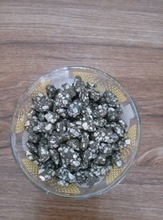High Quality Calcium Bentonite with competitive Price
Introduction:
The kaolin is made from kaolin ore, and then crush into different size according to requirements, which can be made into block or as fine as 6000 mesh. The kaolin is divided into washed bentonite and calcinated bentonite according to different production engineering and application. The adsorption of bentonite can be divided into three types: physical adsorption, chemical adsorption and ion exchange.
1) physical adsorption. The physical adsorption is the intermolecular attraction between the adsorbent and the adsorbed mass, that is, we often say the Fan Dehua force. Physical adsorption is a reversible process, and the adsorption rate and desorption rate are dynamic equilibrium under certain conditions. The main reason for the generation of physical adsorption is the surface energy of the bentonite. Because of the high dispersion of bentonite in water, the phenomenon of physical adsorption is very obvious.
2) chemical adsorption. Chemical adsorption is the chemical bond between the adsorbent and the adsorbed mass, which is generally not reversible. Chemical used in drilling mud treatment agent is a chemical adsorption of typical examples, such as chromium iron wood lignosulfonate is added to bentonite slurry is the use of chromium ion in the edge of the bentonite crystal integrated adsorption. The chemical adsorption is more stable than the physical adsorption. Therefore ferrochrome lignosulfonate treatment of bentonite slurry with high temperature tolerance, as geothermal and ultra deep well anti high temperature mud system.
3) ion exchange adsorption. Bentonite mineral crystals generally carry a negative charge, and so on the surface of bentonite particles to adsorb and so on the equivalent of the opposite charge of the cation. The adsorption of cations can be exchanged with the cations in solution, which is called ion exchange adsorption. The characteristics of ion exchange adsorption are: the same number of ion exchange, and so on. The reaction of ion exchange adsorption is reversible, and the adsorption and desorption rate are influenced by the ion concentration, which is in accordance with the law of mass action.























 Chat online
Chat online


























